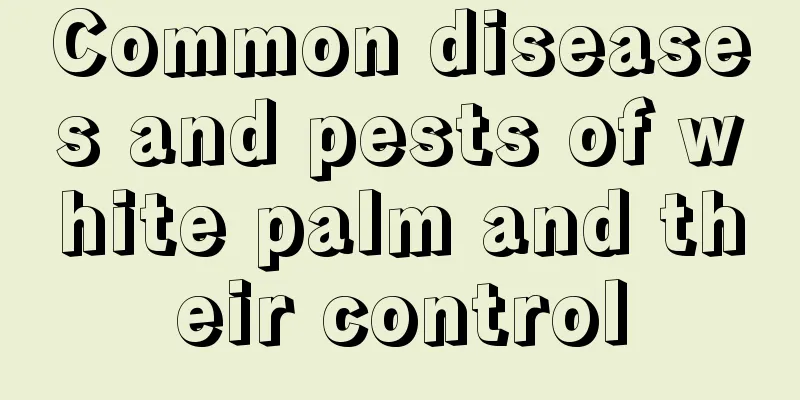Common diseases and pests of white palm and their control

Common diseases of white palmBrown spotBrown spot disease is caused by the bacterium Phytophthora, which mainly exists in the soil. The pathogen invades the plant from the base of the stem. Initially, water-soaked spots appear on the leaves, which gradually turn brown and eventually rot, causing the entire plant to wilt. The specific prevention and control measures are as follows: ① Use 800 times of mancozeb manganese for prevention and control in the early stage of the disease, once every 4-5 days, for 3-4 times in a row, which can effectively prevent the spread of the disease. ② Use 1500 times of oxadiazine + 1000 times of cypermethrin hydrochloride as a mixture for spraying to effectively prevent and treat brown spots and damping off. Root rotFungal disease, the pathogen can infect the roots, stems and leaves. Infection of the roots can cause root rot. When infecting leaves or stems, brown spots appear first. As the disease spreads, the leaves will wither and fall off. In severe cases, the plant will die. The prevention and treatment methods are as follows: ① If root rot is found, clean up the diseased plants in time. If the root rot is minor, remove the rotten part and replant. If the root rot is serious, throw it away directly. Clean up dead leaves in time to avoid infecting other plants. ② When the disease occurs, irrigate the roots with 1000 times solution of root rot. Common pests of white palmaphidAphids mainly suck sap through their needle-like mouthparts, causing the stems and leaves of white palm to become deformed or curled. There are many suitable insecticides, such as malathion, oxydemeton-methyl, aphidicide, and cypermethrin. When insect pests are found, spray the pesticide in time. If there are small amounts of insect pests, scrape them off with bamboo strips. ThripsWhen thrips occur, the leaves of the plants shrink, the growth is slow, and the internodes of the stems are shortened. Thrips are afraid of strong light and often gather in places with little light to cause damage. They are active on the host surface only on cloudy days, in the morning, evening and at night, which is one of the reasons why thrips are difficult to control. When killing thrips pests, it is usually done at night or early in the morning. Spraying pesticides during the day will be ineffective if the insects are not visible. Commonly used pesticides include acetamiprid, chlorpyrifos, imidacloprid, etc. |
<<: Peach blossom disease prevention and control
>>: Common diseases and prevention of saffron (crocus)
Recommend
How to grow and maintain potted Panax notoginseng
Potted cultivation method of Panax notoginseng 1....
How to deal with lavender after it blooms? Do you need to prune it after the flowers fade?
Lavender Flowering Treatment 1. Pruning Lavender ...
Margarite flower cultivation methods and precautions
Soil requirements Margaret likes loose, fertile, ...
When and how to plant Chinese cabbage
Chinese cabbage planting time Chinese cabbage is ...
Is Aspidistra suitable for indoor cultivation?
1. Is it suitable for indoor cultivation? It is v...
Can tofu dregs be used as fertilizer?
Tofu dregs as fertilizer Tofu dregs can be used a...
Can pomelo seeds be planted?
Can pomelo seeds be planted? The seeds of pomelo ...
Cultivation methods and precautions of Perilla
1. Maintenance methods 1. Soil: It does not have ...
Euonymus cultivation method
Euonymus cultivation method soil Euonymus has str...
How to care for and water Phalaenopsis?
Phalaenopsis, with its gorgeous flowers and elega...
Cultivation methods and precautions of potted grapes
Potted grapes are easy to grow. You need to choos...
It is difficult for a potted Clivia to bloom. Change some "leaf mold" and it will bloom more and stay longer!
There are several "tsundere kings" in t...
How to grow crabapple in autumn
1. Breeding conditions 1. Soil: It prefers a slig...
Can boxwood survive if its leaves dry up?
1. Can you survive? Whether the boxwood can survi...
How often should bamboo be watered?
How often should bamboo be watered? Bamboo is a p...









